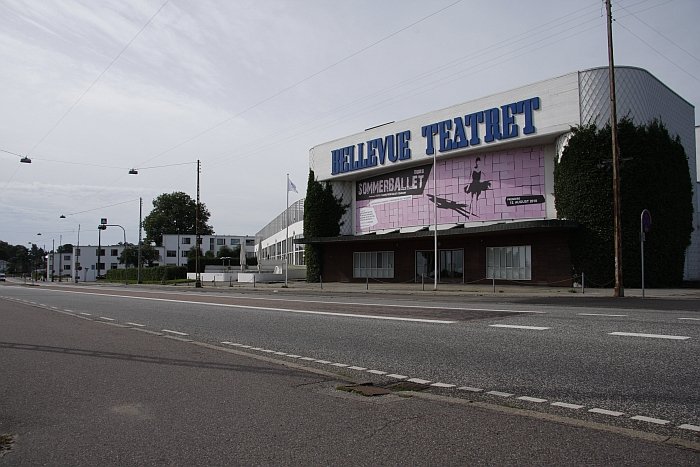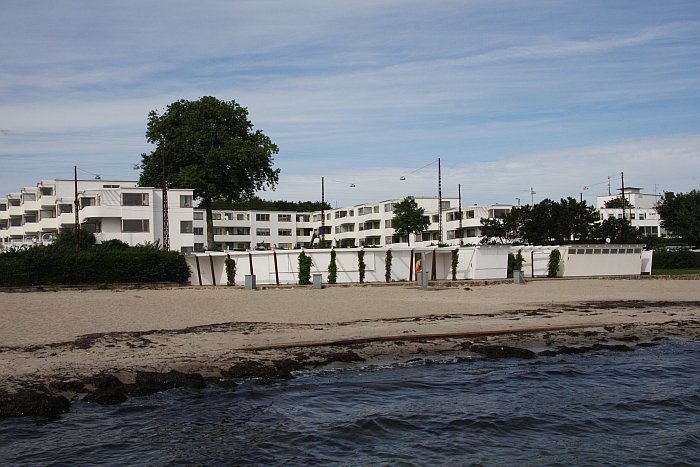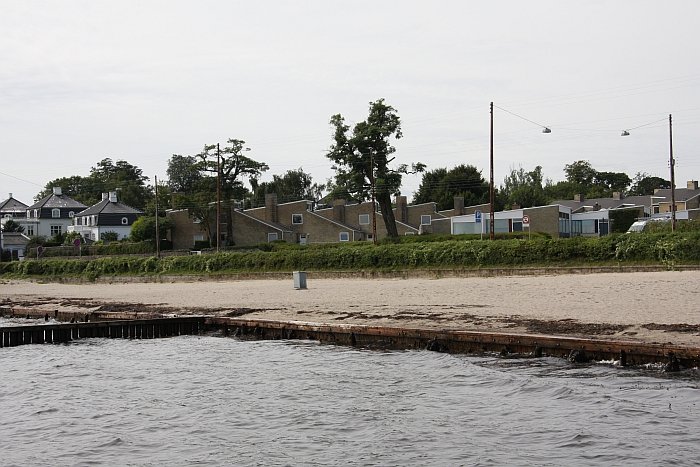Sand is not a material on which many architects would hope to successfully build a project, far less a career. In many ways however that is exactly what the Danish architect and designer Arne Jacobsen did.
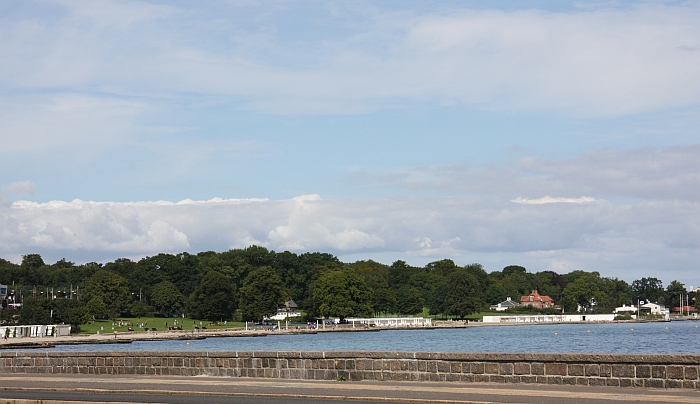
Born on 11 February 1902 in Copenhagen, Arne Emile Jacobsen studied architecture at the city's Kongelige Danske Kunstakademi - Royal Danish Academy of Fine Arts - graduating in 1927. One of Denmark's first, and foremost, functionalists, Arne Jacobsen was responsible for some of Denmark's most important post war architectural projects including Rødovre Town Hall, Toms Chocolate Factory in Ballerup and the SAS Royal Hotel in Copenhagen, which upon its completion in 1960 was the tallest building in Scandinavia and remains today a towering monument to the utopian visions of the period. In later years Arne Jacobsen increasingly completed projects outwith Denmark's borders, the most notable being St Catherine's College, Oxford and the City Hall in Mainz, Germany. Despite the importance of his architecture for many Arne Jacobsen is best known for his furniture design work, a portfolio of contemporary classics including the Egg Chair, Swan Chair and Ant Chair. And a portfolio of contemporary classics which the proud architect Jacobsen would no doubt remind us were all created in context of architectural projects: as a staunch believer in the idea of the Gesamtkunstwerk Arne Jacobsen busied himself with all aspects of a project, including the furniture, fixtures and fittings. Arne Jacobsen died on March 24th 1971 leaving as his legacy a collection of architectural and design projects which present a very personal and individual take on the modernist ideas and which continue to influence and inspire architects and designers.
Arne Jacobsen's first competition success, and as such his first professional steps were, however, taken on that most unpromising of architectural substrates: sand.
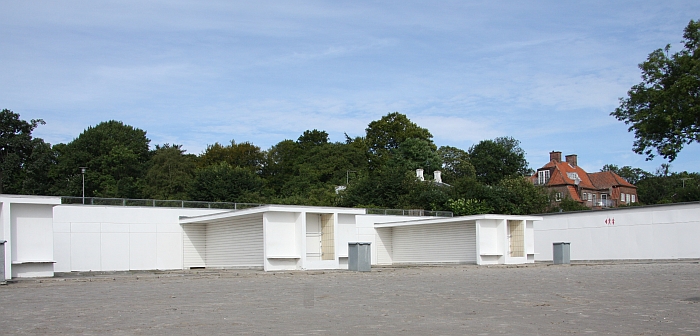
In 1930 the Klampenborg municipal authority moved the main Strandvejen road inland from its position on the shore and thus created space for a new beach complex some 10kms north of Copenhagen. Christened Bellevue Strandbad, the landscape architect C.Th. Sørensen was commissioned to layout the gardens and an architectural competition undertaken for the necessary changing rooms, kiosks, lifeguard facilities, et al. A competition which Arne Jacobsen won. That thought that Fate in her poetic way played a role in Jacobsen's victory cannot be ignored; Arne Jacobsen's Diploma project, for which he won the Academy of Fine Arts' Gold Medal, was a concept for a Danish National Museum on exactly the same site as the Bellevue beach complex. Jacobsen's museum concept was however a strict neo-classical design, Bellevue unquestionably influenced by the international style.
Prior to Bellevue Jacobsen had only built private houses, initially in a very conservative, neo-renaissance style; however, and much like his Finnish contemporary Alvar Aalto, Arne Jacobsen experienced a conversion to Modernism in the late 1920s. Unlike Aalto's relative sudden conversion Jacobsen's was progressive and easier to document. In 1925, and so while still a student, Jacobsen participated in the Exposition Internationale des Arts Décoratifs et Industriels Modernes in Paris where he saw Le Corbusier's fabled L'Esprit Nouveau pavilion and Konstantin Melnikov's even more fabled constructivist Soviet pavilion. In addition Jacobsen visited Germany the late 1920s where he experienced Ernst May's Neue Frankfurt project as well as works by the likes of Mies van der Rohe or Walter Gropius. The consequence was that throughout the 1920s Jacobsen's neo-classic Scandinavian style became increasingly replaced by the clean lines and unassuming curves of modernism of which Bellevue is one of the best examples. Or was one of the best examples. Much has sadly since vanished however the changing rooms remain and set as they are unobtrusively into Sørensen's gardens provide a tempting impression of what once was. As do the lifeguard towers, their fading ice-cream chic reminding of past glories and untold carefree pre-war summer afternoons.
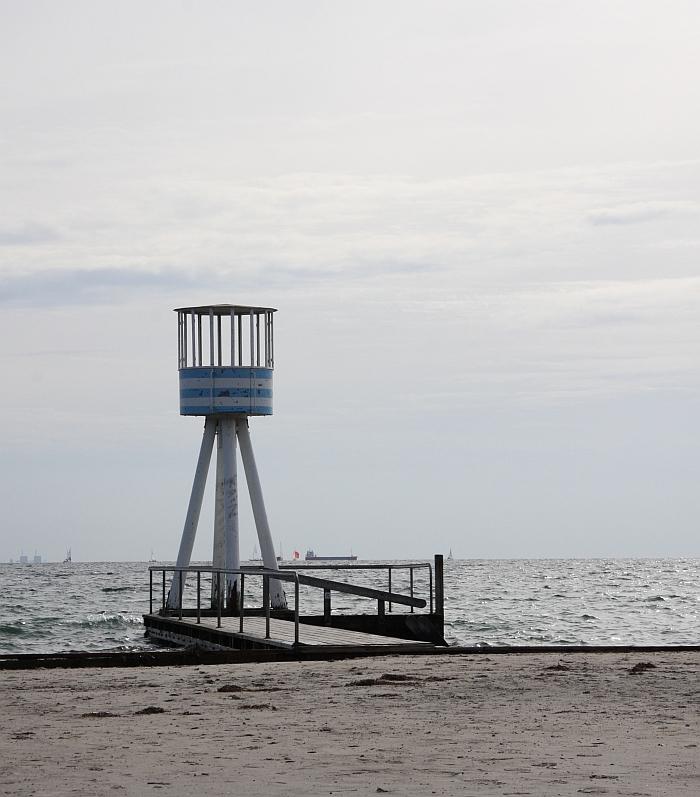
Following the opening of the Bellevue beach complex Arne Jacobsen went on to build the Bellavista housing estate, Bellevue Theatre and Mattsson riding school, thus turning a small portion of the Danish coast into his personal vision of Modernist construction and planning.
A vision which had to do without one of Arne Jacobsen's grander projects.
Arne Jacobsen's move towards modernism included a fascination with technology and an increasing appreciation of what technology could offer architecture, and his original Bellevue development plans foresaw a sublimely monumental observation tower crowned by a rotating restaurant. A plan sadly, oh so sadly, not realised on account of objections from environmentalists. Jacobsen did however manage to incorporate a retractable roof into the Bellevue Theatre, thus allowing for performances under open skies and with a gentle sea breeze.
In the late 1950s Jacobsen was responsible for the construction the so-called Søholm row of houses on the southern end of the Bellevue complex, one of which belonged to him and in the cellar of which he housed his studio. And from which he had easy access to one of his earliest, and most enchanting, projects.
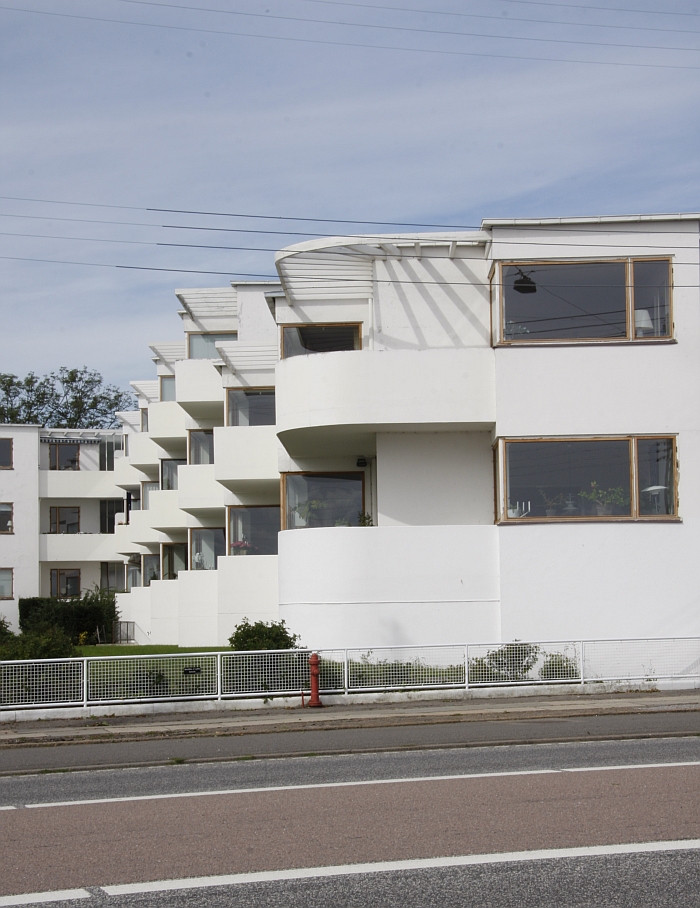
From the moment in opened in June 1932 the Bellevue beach complex proved a success, the Copenhagen public flocking to the new attraction: something they still do. By all accounts, and we can't verify any of them, Bellevue remains one of the most popular summer day trip destinations for the residents of Copenhagen and vicinity.
And a location which should be on any Copenhagen tourist's itinerary.
While admittedly much of the spirit of adventure and gaiety of the early 1930s has vanished from the site, and many of the houses in the Bellavista estate are showing all to clearly the limitations of 1930s technology, materials and building practices, Bellevue is still an exhilarating and fascinating place to visit.
And proof that sand can be a reliable and stable material on which to build.
Happy Birthday Arne Jacobsen!
